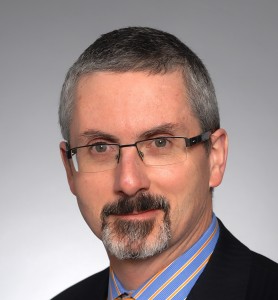DigitalGlobe founder: ‘Fix outdated regs’
Walter Scott has a lot to do by the middle of next year in his role as chief technical officer of DigitalGlobe, the satellite company he founded in 1992 under the name of WorldView Imaging. The Colorado company is busy absorbing the satellites and networking equipment of one-time rival GeoEye, which it purchased last year. That kind of technical work probably doesn’t put sweat on the brow of this Harvard and Berkeley-educated computer scientist and former manager of Brilliant Pebbles, the 1980s proposal to knock down Russian missiles with satellite-launched projectiles. These days, it's a regulatory issue that's making Scott sweat. He wants NOAA, the arm of the Commerce Department that controls DigitalGlobe’s license, to allow the company to sell imagery showing details as small as 25 centimeters across. DigitalGlobe made the request in May, but so far NOAA has stood by its rule limiting non-U.S. government sales to 50 centimeter resolution for national security reasons. Scott sees the limit as an anachronism. He discussed that issue, Syria, and the status of the GeoEye absorption with me by phone.
Satellites vs. aerial imagery >> "Airplanes are always going to be able to fly at higher resolution than satellites. They can basically skim along the tree tops. I won’t say that they can count nose hairs on flies, but they can come awfully close. What satellite gives you is the ability to collect very large areas, very quickly, to do it all around the world, and to do so at a cost point that is attractive when compared to custom area over flight."
Resolution matters to customers >> “They’re getting imagery today at down to probably two and half centimeters – roughly one inch – from airplane. If you go look at Google Maps, Apple, Bing, Nokia and a variety of other online portals, you’ll see high resolution aerial imagery in urban areas. And it’s somewhat of a fact of life that higher resolution on things that are human scale – like cities for example – helps us better understand what it is we’re looking at.”
Request to NOAA >> “On May 14, we asked NOAA to remove that (resolution) restriction so that we have the ability to put our best foot forward and sell commercially the best product that we have, when we launch WorldView 3 next year. We’ll be able to get imagery as good as 25 centimeter pan (panchromatic, meaning black and white), as good as 1 meter multi-spectral and as good as 3 meter resolution in the shortwave infrared.”
“Outdated regulation” “You’ve got aerial imagery at 5 centimeter resolution in 90 countries around the world. And I think what we’re dealing with is outdated regulation that is limiting U.S. competitiveness and is at risk of causing a burgeoning market to flatten during one of the most technologically innovative periods in this country.”
International competition >> “There’s an increasingly competitive international market place. We see that the French with Astrium have launched a number of Pleiades satellites. We’re seeing a number of governments around the world emerging with their own systems, and we’d like to take advantage of the fact that U.S. technology can be the leader by being allowed to utilize that technology and be competitive in the marketplace, instead of being relegated to a me-too player.”
American jobs >> “We believe part of the reason why Congress (gave the Commerce Department licensing authority) was that Commerce is charged with bringing a balanced view to the table -- looking out at American economic interests, factors like international competitiveness, American jobs, growing the technology base -- as opposed to giving regulatory authority to another agency that might have had more of a single purpose focus.
Self policing >> "Shutter control is something that the U.S. government has the right to impose at any time. That was part of the legislation that enabled this industry to get started. They never have. And I believe part of the reason they never have is because the industry has been very forward in terms of self policing. For example, during Operation Iraqi Freedom we withheld imagery of the active theater of conflict, and as a general matter we don’t release imagery of any active combat zones to public uses like web portals. So, we’ve tried to self police."
Imaging Syria? >> “I would expect that we would act in a manner consistent with how we always have, which is taking a very responsible, thoughtful approach.”
Others not so cautious >> “U.S. companies are self policing in ways that foreign competitors are not. For example, Astrium, operating the Pleiades system is under neither any U.S. government constraint, nor seems to be exercising a level of self policing.”
Absorbing GeoEye >> "There’s still a lot of work that needs to get done to fully realize all of the integration associated with the combination….The boring technical stuff like getting all of the satellites operating on a common operating system, tasking system, production system, those sorts of things.”
GeoEye 2 satellite >> “The plan is to store the satellite and then at a future time, launch it, to support replenishment of our constellation or potentially in response to increased market demand….It’s not particularly challenging. There are a number of facilities around the country that are capable of storing satellites. After all, I if you think about it, when you’re manufacturing a satellite in a factory, you’re storing it while you’re completing it.”



